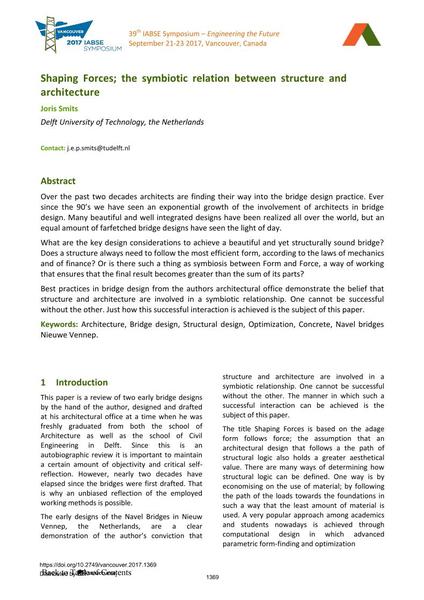Shaping Forces; the symbiotic relation between structure and architecture

|
|
|||||||||||
Détails bibliographiques
| Auteur(s): |
Joris Smits
(Delft University of Technology, the Netherlands)
|
||||
|---|---|---|---|---|---|
| Médium: | papier de conférence | ||||
| Langue(s): | anglais | ||||
| Conférence: | IABSE Symposium: Engineering the Future, Vancouver, Canada, 21-23 September 2017 | ||||
| Publié dans: | IABSE Symposium Vancouver 2017 | ||||
|
|||||
| Page(s): | 1369-1374 | ||||
| Nombre total de pages (du PDF): | 6 | ||||
| Année: | 2017 | ||||
| DOI: | 10.2749/vancouver.2017.1369 | ||||
| Abstrait: |
Over the past two decades architects are finding their way into the bridge design practice. Ever since the 90’s we have seen an exponential growth of the involvement of architects in bridge design. Many beautiful and well integrated designs have been realized all over the world, but an equal amount of farfetched bridge designs have seen the light of day. What are the key design considerations to achieve a beautiful and yet structurally sound bridge? Does a structure always need to follow the most efficient form, according to the laws of mechanics and of finance? Or is there such a thing as symbiosis between Form and Force, a way of working that ensures that the final result becomes greater than the sum of its parts? Best practices in bridge design from the authors architectural office demonstrate the belief that structure and architecture are involved in a symbiotic relationship. One cannot be successful without the other. Just how this successful interaction is achieved is the subject of this paper. |
||||
| Mots-clé: |
béton architecture
|
||||
